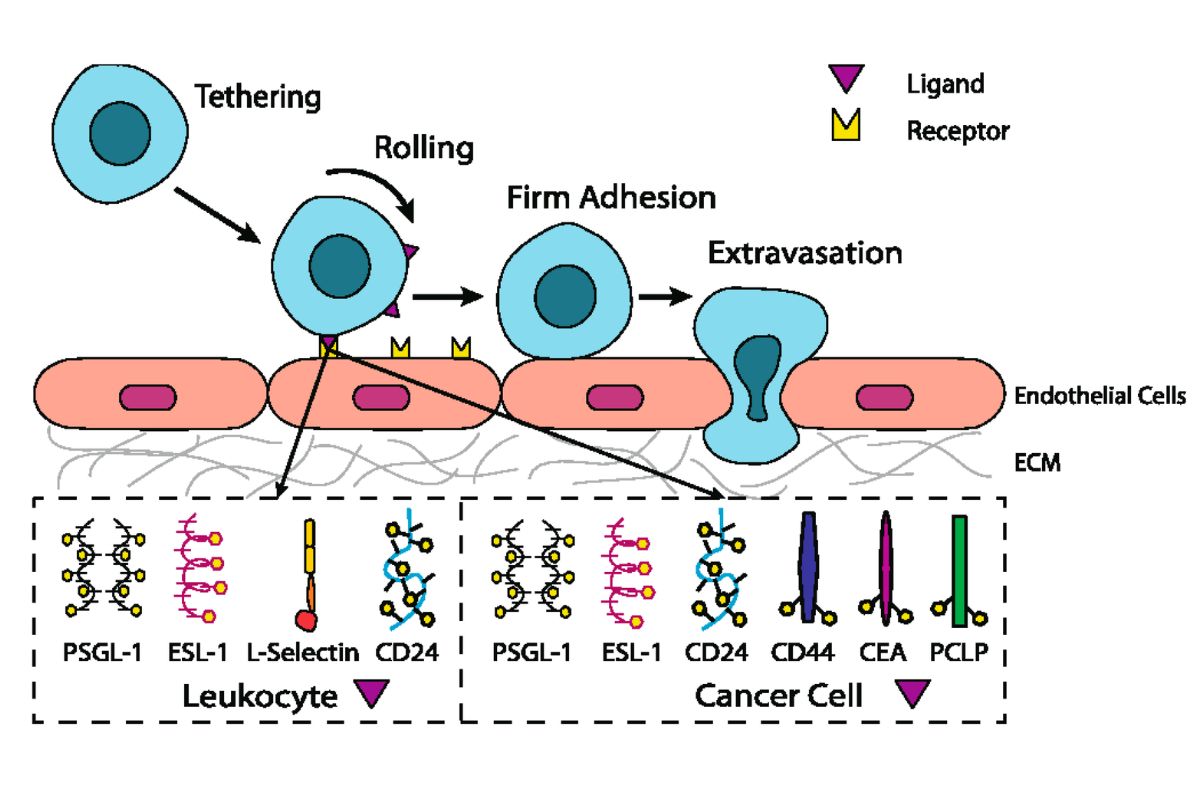
Selectins are a type of cell adhesion molecule that play a crucial role in the body's immune response. They help white blood cells travel to sites of inflammation or injury. There are three main types of selectins: E-selectin, L-selectin, and P-selectin. Each type has a unique function and location within the body. For instance, E-selectin is found on endothelial cells lining blood vessels, while L-selectin is on leukocytes. P-selectin is stored in platelets and endothelial cells and is quickly mobilized during inflammation. Understanding selectins can help in grasping how our bodies fight infections and heal wounds. Want to know more? Let's dive into 27 fascinating facts about these essential molecules.
What Are Selectins?
Selectins are a family of cell adhesion molecules that play a crucial role in the immune system. They help cells stick to each other and to the walls of blood vessels. Here are some fascinating facts about these vital molecules.
-
Selectins are glycoproteins. These molecules are proteins with sugar molecules attached, which helps them perform their adhesive functions.
-
There are three types of selectins. These include E-selectin, P-selectin, and L-selectin, each with unique roles in the body.
-
E-selectin is found on endothelial cells. This type of selectin is primarily located on the cells lining blood vessels.
-
P-selectin is stored in platelets and endothelial cells. It plays a role in the early stages of inflammation.
-
L-selectin is found on leukocytes. This type is present on white blood cells, aiding in their movement to sites of infection or injury.
Functions of Selectins
Selectins are not just about sticking cells together; they have specific functions that are vital for health and disease management.
-
Selectins mediate the rolling of leukocytes. This process helps white blood cells move along blood vessel walls to reach infection sites.
-
They play a role in inflammation. By helping white blood cells reach inflamed tissues, selectins are crucial in the body's response to injury or infection.
-
Selectins aid in wound healing. They help recruit cells necessary for repairing damaged tissues.
-
They are involved in cancer metastasis. Selectins can help cancer cells spread to other parts of the body by aiding their movement through the bloodstream.
-
Selectins participate in immune surveillance. They help immune cells patrol the body for signs of infection or disease.
Molecular Structure of Selectins
Understanding the structure of selectins can provide insights into how they function.
-
Selectins have a lectin domain. This part of the molecule binds to specific sugar molecules on other cells.
-
They contain an EGF-like domain. This domain is similar to a part of the epidermal growth factor, which is involved in cell growth and development.
-
Selectins have a series of consensus repeats. These repeats are similar to those found in complement regulatory proteins.
-
They possess a transmembrane domain. This part anchors the selectin to the cell membrane.
-
Selectins have a short cytoplasmic tail. This tail is involved in signaling within the cell.
Clinical Relevance of Selectins
Selectins are not just important for basic biology; they have significant clinical implications.
-
Selectins are targets for anti-inflammatory drugs. By blocking selectins, these drugs can reduce inflammation.
-
They are involved in cardiovascular diseases. Selectins play a role in the development of atherosclerosis, a condition where arteries become clogged.
-
Selectins are markers for certain diseases. Elevated levels of selectins can indicate conditions like sepsis or cancer.
-
They are being studied for cancer therapy. Researchers are exploring ways to block selectins to prevent cancer metastasis.
-
Selectins are involved in transplant rejection. They help recruit immune cells that can attack transplanted organs.
Research and Discoveries
Ongoing research continues to uncover new facts about selectins and their roles in health and disease.
-
Selectins were discovered in the late 1980s. Scientists identified these molecules while studying cell adhesion.
-
They are studied using various models. Researchers use cell cultures, animal models, and clinical samples to study selectins.
-
Selectins are involved in leukocyte trafficking. This process is crucial for immune responses and is a major focus of research.
-
They are being explored for drug delivery. Scientists are looking at ways to use selectins to target drugs to specific tissues.
-
Selectins are part of the innate immune system. They help the body respond quickly to infections and injuries.
-
They interact with other cell adhesion molecules. Selectins work alongside integrins and other molecules to mediate cell adhesion.
-
Selectins are involved in chronic diseases. Conditions like asthma, arthritis, and diabetes have been linked to selectin activity.
Final Thoughts on Selectins
Selectins play a crucial role in the body's immune response. These molecules help white blood cells reach sites of inflammation or injury. Without them, our bodies would struggle to fight infections and heal wounds. Understanding selectins can lead to better treatments for diseases like cancer, arthritis, and heart disease. Scientists are continually researching these proteins to unlock new medical breakthroughs.
Knowing about selectins isn't just for scientists. It helps everyone understand how our bodies work and how we can stay healthy. The more we learn, the better we can take care of ourselves and others. So next time you hear about selectins, you'll know they're more than just a scientific term—they're vital to our health. Keep curious, stay informed, and appreciate the tiny warriors working inside us every day.
Was this page helpful?
Our commitment to delivering trustworthy and engaging content is at the heart of what we do. Each fact on our site is contributed by real users like you, bringing a wealth of diverse insights and information. To ensure the highest standards of accuracy and reliability, our dedicated editors meticulously review each submission. This process guarantees that the facts we share are not only fascinating but also credible. Trust in our commitment to quality and authenticity as you explore and learn with us.
